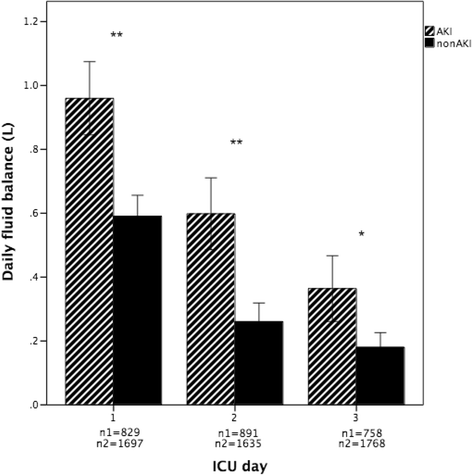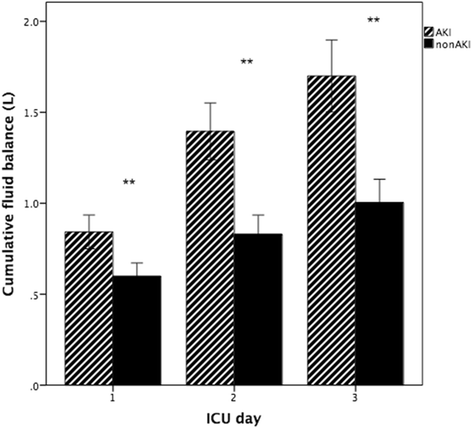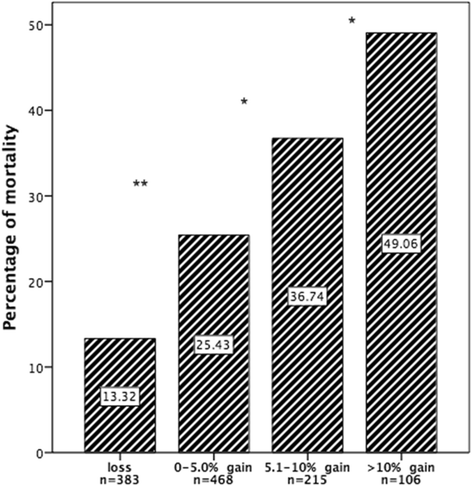Fluid balance and mortality in critically ill patients with acute kidney injury: a multicenter prospective epidemiological study
- PMID: 26494153
- PMCID: PMC4619072
- DOI: 10.1186/s13054-015-1085-4
Fluid balance and mortality in critically ill patients with acute kidney injury: a multicenter prospective epidemiological study
Abstract
Introduction: Early and aggressive volume resuscitation is fundamental in the treatment of hemodynamic instability in critically ill patients and improves patient survival. However, one important consequence of fluid administration is the risk of developing fluid overload (FO), which is associated with increased mortality in patients with acute kidney injury (AKI). We evaluated the impact of fluid balance on mortality in intensive care unit (ICU) patients with AKI.
Methods: The data were extracted from the Beijing Acute Kidney Injury Trial. This trial was a prospective, observational, multicenter study conducted in 30 ICUs among 28 tertiary hospitals in Beijing, China, from 1 March to 31 August 2012. In total, 3107 patients were admitted consecutively, and 2526 patients were included in this study. The data from the first 3 sequential days were analyzed. The AKI severity was classified according to the Kidney Disease: Improving Global Outcomes guidelines. The daily fluid balance was recorded, and the cumulative fluid balance was registered at 24, 48, and 72 h. A multivariate analysis was performed with Cox regression to determine the impact of fluid balance on mortality in patients with AKI.
Results: Among the 2526 patients included, 1172 developed AKI during the first 3 days. The mortality was 25.7 % in the AKI group and 10.1 % in the non-AKI group (P < 0.001). The daily fluid balance was higher, and the cumulative fluid balance was significantly greater, in the AKI group than in the non-AKI group. FO was an independent risk factor for the incidence of AKI (odds ratio 4.508, 95 % confidence interval 2.900 to 7.008, P < 0.001) and increased the severity of AKI. Non-surviving patients with AKI had higher cumulative fluid balance during the first 3 days (2.77 [0.86-5.01] L versus 0.93 [-0.80 to 2.93] L, P < 0.001) than survivors did. Multivariate analysis revealed that the cumulative fluid balance during the first 3 days was an independent risk factor for 28-day mortality.
Conclusions: In this multicenter ICU study, the fluid balance was greater in patients with AKI than in patients without AKI. FO was an independent risk factor for the incidence of AKI and increased the severity of AKI. A higher cumulative fluid balance was an important factor associated with 28-day mortality following AKI.
Figures






Comment in
-
Multiple imputation is better than KDIGO guidelines for estimating unknown baseline renal function.Crit Care. 2016 Apr 15;20(1):105. doi: 10.1186/s13054-016-1281-x. Crit Care. 2016. PMID: 27080867 Free PMC article. No abstract available.
References
Publication types
MeSH terms
LinkOut - more resources
Full Text Sources
Other Literature Sources
Medical

